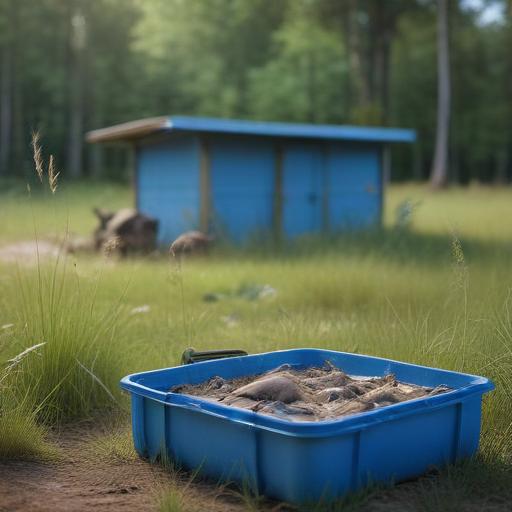Wildlife officials in central California have reported instances of wild pigs being exposed to a blue-dyed pesticide bait, causing concerns about potential health impacts on local wildlife. In March of this year, a wildlife trapper discovered blue muscle or fat in wild pigs from the Monterey County area, about two and a half hours south of San Francisco.
The California Department of Fish and Wildlife (CDFW) later confirmed that the blue coloration was linked to an anticoagulant rodenticide called diphacinone, found in the stomach and liver of one examined pig. The suspect pigs likely ingested the toxic bait directly or consumed other animals that had previously eaten the bait.
Reports indicate multiple instances of blue tissue in wild pigs earlier this year, although the exact number of affected animals is still uncertain. So far, the health lab has received only one sample for analysis. Krysten Kellum, an information officer with the CDFW, mentioned that there had not been further reports of similar incidents since those initial findings.
In a broader context, between 2010 and 2021, the CDFW recorded rodenticide exposure in 19 out of 30 tested black bears in California and noted instances of exposure in other wildlife as well. The health department highlights the importance of observations from hunters regarding blue-tissued game, stressing their role in monitoring wildlife health.
To prevent further exposure, CDFW officials are urging pesticide users to apply rodenticides carefully, particularly in areas frequented by wildlife. They recommend using bait stations that are inaccessible to non-target species like wild pigs. Additionally, hunters are cautioned about the possible contamination of game meat, particularly with species such as wild pigs, bears, and deer. Any unusual findings in harvested wildlife should be reported to the CDFW’s Wildlife Health Lab.
It’s crucial for both hunters and residents to remain vigilant about wildlife health, as community efforts can significantly contribute to safeguarding local ecosystems. By fostering awareness and responsible usage of pesticides, we can hopefully mitigate potential threats to wildlife and maintain a balanced environment.
